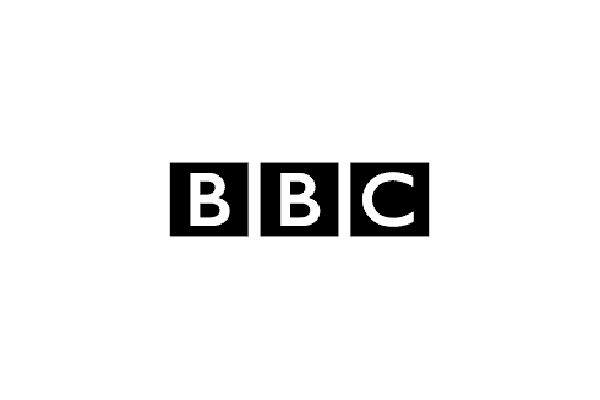Your pension fund value is the amount in your defined contribution pension on the day you choose to transfer. As your investments rise and fall, your pension fund value changes from day to day. When you ask for a pension transfer value quote it will be an estimate and is not guaranteed. The value could be higher or lower on the day you transfer as investment values move quickly.
Transfer your pension: compare pension transfers deals
Compare deals from leading pension transfer providers
Join our personal finance newsletter for top deals and insights
You can unsubscribe from emails at any time. For more information about how we process your information, please read our Privacy Notice.
What are pension transfers?
A pension transfer is when you move your existing pension to a new company. There are a few reasons you might be interested in doing a pension transfer:
If a different company would charge you less for managing your pension fund
So that you can access a wider range of investment funds
If you've got multiple pensions from various jobs and you want to consolidate them into one single pot
If your current scheme is being closed
To access different features, for instance, flexible drawdown in retirement, the ability to manage your pension online, or better modelling tools, calculators and guidance.
To change from a defined benefit (DB) scheme to a defined contribution (DC) one. The investment watchdog (FCA) warns that for most people transferring a DB benefit is not in their best interests.
Transferring your pension could see you save paying more fees than you need to.”
Should I transfer my pension?
You might be able to save money by doing a pension transfer, but there's lots to think about before choosing the right new pension for your needs.
First, check whether the management fees are lower elsewhere. You should also check other costs such as platform fees, investment charges, transaction fees, and charges for accessing your money at retirement.
Second, check how much it costs to transfer your pension fund to make sure you’d save overall. For instance, you may be charged an exit fee by your existing pension company. You may also be charged set up fees by your new provider.
Third, check for any benefits you could lose by transferring. Look for special features, such as a guaranteed annuity rate, and check whether transferring could impact the age you can access your money. Be warned, you could lose out on special features by transferring, such as accessing your pension at 55 rather than 57.
Fourth, check the rules around advice. You may need to consult and pay for a financial adviser before transferring, for instance if you want to move a DB pot worth more than £30,000 into a DC scheme. You will also need advice if you’re transferring a DC pot with guaranteed benefits worth more than £30,000.
Finally, check your pension provider’s transfer rules before you switch. It's important to avoid any nasty surprises and to get the full picture before you go ahead.
Assuming 3% annual fund growth and a salary of £38,131
How to transfer pension providers
Before making any decisions on transferring your pensions, you might want to talk to an IFA who specialises in pension transfers to get some advice. They can help you make the right decision for your circumstance and understand the pitfalls.
If you’re thinking about transferring a defined benefit or final salary pension and the value is worth more than £30,000 – advice is a legal requirement.
Even with a defined contribution workplace pension, you might have to take advice. For instance, if you have “safeguarded benefits” worth more than £30,000, such as a guaranteed annuity rate.
If you decide to go ahead with a pensions transfer, you need to contact both your existing and chosen provider.
If you’re transferring from defined benefit, you’ll need to get the cash equivalent transfer value (CETV) from your scheme administrator or provider. They will provide you with a document called a Statement of Entitlement that sets out how much your pension savings are worth.
The scheme administrator should also alert you to any extra benefits you’ve built up under the scheme and inform you of any exit charges.
You then need to apply to your new scheme. Your new provider may ask you to fill in an application form, or they might have an online process. Your current scheme may also need you to fill in some forms.
If you still feel you need further assistance, you can get free impartial information about transferring your pension, from MoneyHelper.”
I want to transfer my pension. How do I find the right pension transfer for me?
Why am I transferring pension funds?
Do I have a defined benefit pension or a defined contribution pension?
How much is my pension pot worth?
The difference between a pension fund value and the pension transfer value
![Pension fund value]()
Pension fund value

Your pension fund value is the amount in your defined contribution pension on the day you choose to transfer. As your investments rise and fall, your pension fund value changes from day to day. When you ask for a pension transfer value quote it will be an estimate and is not guaranteed. The value could be higher or lower on the day you transfer as investment values move quickly.
![Pension transfer value]()
Pension transfer value

A pension transfer value is the sum of money your pension provider will offer to buy you out of the scheme. The CETV (cash equivalent transfer value) is how much your employer will offer you in return for your giving up the rights or benefits attached to your defined benefit scheme. CETVs can rise and fall. You can check a pension transfer value index, which shows how the market is moving. Speak to a financial adviser to get defined benefit pension transfer advice.
The difference between a pension fund value and the pension transfer value
Pension fund value
Pension transfer value
A pension transfer value is the sum of money your pension provider will offer to buy you out of the scheme. The CETV (cash equivalent transfer value) is how much your employer will offer you in return for your giving up the rights or benefits attached to your defined benefit scheme. CETVs can rise and fall. You can check a pension transfer value index, which shows how the market is moving. Speak to a financial adviser to get defined benefit pension transfer advice.
How defined benefit pension transfer value (CETV) is worked out
Each pension scheme uses its own calculation to decide what your CETV is, but common factors include:
How old you are
The scheme's retirement age
Life expectancy
Inflation (linked to CPI or RPI)
Your personal situation (married or single)
The pension value transfer index
Pension scheme funding
It's not a straightforward calculation, but your scheme administrator will carry it out for you. Even so, it's usually best to seek pension transfer advice from a professional.
Financial advice is a legal requirement if you have a defined benefit pension worth more than £30,000.”
How much does it cost to transfer pension funds?
A UK pension transfer could mean costly fees, such as exit charges or administration costs. These might come from your existing pension company or your new one.
Sometimes, pension transfer charges are a percentage fee of the amount you move across.
For example, you could be charged 2% of the pension transfer value. So, if your pension fund is worth £20,000, a 2% fee would mean you would need to pay £400.
With other companies, pension transfer costs are a set fee - for example, £500 - whatever size your fund is.
There's no set rule as to which of these pension transfer charges will work out cheaper for you, as it depends on how much you have saved up in your pension.
Here are a couple of examples:
If your pension fund is worth £20,000
A 2% percentage charge would cost you £400
A set fee would cost you £500
If your pension fund is worth £30,000
A 2% percentage charge would cost you £600
A set fee would still cost you £500
If you are over 55 and want to transfer your pension the rules are different. If you joined the scheme on or after 31 March 2017, you can’t be charged an early exit fee whatever your age. If you joined the scheme before that, the fee is capped at 1% if you’re over 55 (57 from 2028).
Remember that when you do your calculation, pension transfer value is an important factor. Compare the prices to see whether a set fee or percentage value will be best for you.
How to transfer your pension to another person
Your defined contribution pension can be transferred to someone else if you die. You'll usually nominate who this will be when you set up your pension.
If you die before you're 75, your nominated person doesn't usually have to pay income tax when they withdraw money from your pension. But if you die after you're 75, they'll have to pay income tax. The amount they have to pay will be based on their existing income.
It might be possible to transfer your pension to someone else in other circumstances, for instance, if you’re getting divorced.
Money held in a pension fund will no longer be exempt from inheritance tax from 6 April 2027.
Transferring to an overseas pension
Transferring your pension to an account in another country can be very complicated from a tax perspective.
You will need to make sure that your chosen overseas pension provider is offering a recognised overseas pension scheme, otherwise your current UK pension company may refuse to transfer your funds across.
This means investing in a qualifying recognised overseas pension scheme’ (QROPS).
Usually, you can transfer without paying any tax. But in some circumstances, you’ll have to pay 25% tax on the transfer. For instance, if you transfer to a QROPS outside the UK, Gibraltar or EEA and you won’t live in the country you transferred to.
If you try to transfer to a scheme that’s not a QROPS, your pension provider may refuse. If they allow you to transfer your money, you’ll have to pay at least 40% tax.
Pension transfer FAQs
Why does it cost to transfer my pension?
When you transfer your pension fund to a new company, you often need to pay fees and charges. These cover the cost of buying and selling your pension's investments.
Can I transfer multiple pensions into one?
Usually yes, but it may not be cost effective to do it if the pension plans you are transferring are small. It may also have tax implications. Get professional advice before you do this.
Is it best to consolidate pensions?
If you have several different pension pots, there are potential advantages if you consolidate them into one.
It can make it easier to keep track of and manage your pension savings more easily. You could also potentially save money if you can transfer from higher-cost schemes to a lower-cost one.
However, there can be disadvantages. For instance, if you want to take lump sums after retirement, withdrawing a small pot in its entirety shouldn’t affect future pension contributions. However, if you withdraw part of a larger pot, you may be subject to the Money Purchase Annual Allowance, which limits how much you can save tax-free in the future.
Should I get advice before transferring my pension?
Yes, it may be sensible to take advice before transferring your pension. In some cases, it is a legal requirement.
What is the cash equivalent transfer value?
The cash equivalent transfer value (CETV) is the amount your current pension scheme will offer you if you want to transfer out of your defined benefit pension and into a defined contribution scheme.
How to transfer to an overseas pension scheme
The overseas scheme you want to transfer your pension savings to must be a ‘qualifying recognised overseas pension scheme’ (QROPS). It’s up to you to check this with the overseas scheme or your UK pension provider or adviser.
If it’s not a QROPS, your UK pension scheme may refuse to make the transfer, or you’ll have to pay at least 40% tax on the transfer.
Can I change my mind after transferring my pension?
You usually have 30 days to change your mind, but if the value of your pension investments drop in that time the money returned could be less.
I've been called about a pension transfer - is it legit?
No. Pension cold calls are banned in the UK, so if someone has rung you up to talk about transferring your pension, the odds are it's a scam.
















